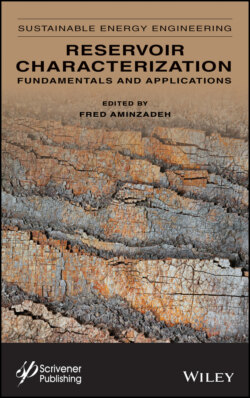Читать книгу Reservoir Characterization - Группа авторов - Страница 55
4.1 Introduction
ОглавлениеFor obtaining a fundamental knowledge of the genetic history of crude oils two types of geochemical methods should be used.
1 1. Those for determination of the genetic origin of the oil and to unravel its mixtures, those methods that can see through the effects of biodegradation are the most useful.
2 2. Those used to determine the biodegradation history and the charging of a biodegraded reservoir. Methods that directly analyze the effects of biodegradation are most useful.
All geochemical studies using molecular geochemical approaches should include the classical methods of biomarker and paraffin analysis. Application of these analyses, SARA, GC-FID, GCMS saturates, and GCMS aromatics, form the foundation of advanced geochemical technologies (AGTs) necessary to solve the critical questions about the provenance of the oil and history of the reservoirs.
Any geochemical oil or source rock correlation study should begin with a liberal application of those classical molecular geochemical analyses that have become routine. The basic SARA, GC-FID, GCMS saturates and GCMS aromatics provide an initial assessment of extent of biodegradation, possible source relationships and thermal maturities. However, the bio-degradative alteration of heavy oil introduces complexities that are hidden from the view of these classical methods.
Carbonate rocks (limestone and dolomite) contain major oil and gas deposits throughout the world:
33 % of the North American Fields
50% of N. American Giant Fields
~ 40% of giant fields world wide
Carbonate rocks have been discounted as important source rock because of their lower organic-carbon content and catalytic activity in comparison to shales [1]. However, carbonate source rocks contain mostly sapropelic (oil-prone, Type II)) organic matter [2], which yields a higher percentage of oil earlier than more humic organic matter of shales. The unique Carbonate-Evaporite depositional and diagenetic environments, without infux of major terrigenous and humic substances, produce algal-sapropelic organic facies that yield sulfur-rich petroleum at lower temperatures than humic-type shales. The worldwide presence of small to very large, apparently immature, to marginally mature, non-biodegraded, heavy oil/bitumen/asphalts deposits, rich in resins and asphaltenes, are oil sourced from carbonate source rocks.
This study will provide an overview of the geochemical characteristics of carbonate-derived oils and source rocks collected from different wells and fields.
As with shales, the source potential of carbonate rocks depends primarily upon the organic facies rather than the mineral matrix. Where the depositional and early diagenetic environment is highly oxygenated, the total-organic-carbon (TOC) content is low. The remaining kerogen is highly oxygenated, with a negligible generative capacity for hydrocarbons.
The early anoxic diagenetic depositional environment can result in the deposition of organic-rich, fine-grained carbonate sediments that are excellent potential source rocks [3]. Although they constitute a small percentage of all carbonate rocks, organic-rich, fine-grained carbonate rocks are widespread in both time and space and are the probable source of 30-40% or more of the petroleum reserves of the world.
Gas-prone organic facies are rare in carbonate rocks, because they are usually dominated by humic organic matter deposited in a dominantly clay matrix. However, gas-prone organic facies may occur in carbonate rocks as results of turbidite deposition [4] or by a mixture of kerogen types II and III.
Oils derived from carbonate rocks are often richer in cyclic hydrocarbons and sulfur containing compounds than oils derived from shales, owing to the lack of terrestrial-plant waxes in their source organic matter.
